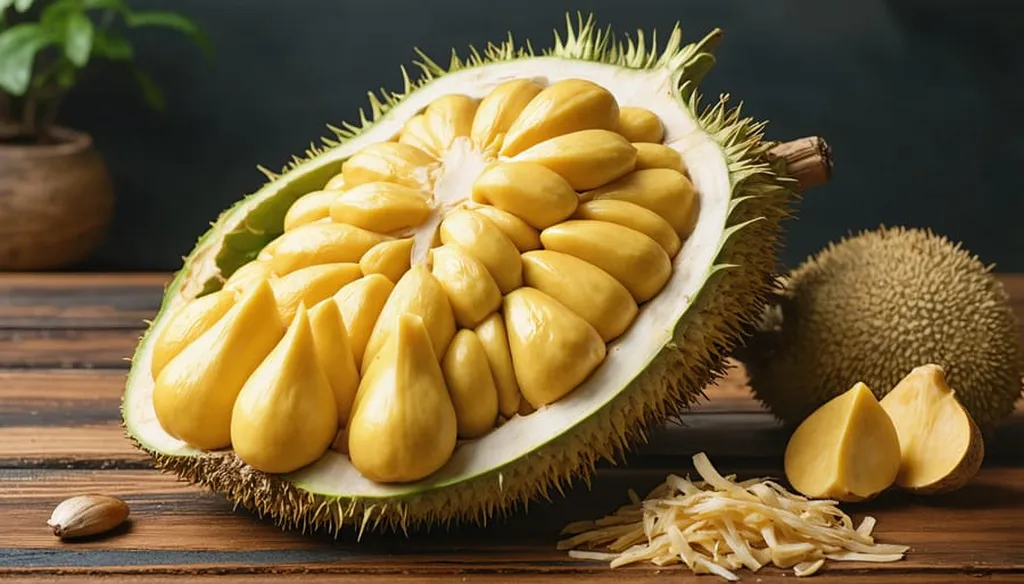In the lush, tropical landscapes where jackfruit thrives, a scientific discovery is brewing that could reshape the way we understand and cultivate this beloved fruit. A recent study, led by Di Chen from the Analysis and Test Center at the Chinese Academy of Tropical Agricultural Sciences in Haikou, has unveiled the intricate metabolic differences between two popular jackfruit varieties, QY1H and XM1H. Published in *Food Chemistry: X* (translated as “Food Chemistry: New Horizons”), the research delves into the aroma and metabolic characteristics that make each variety unique, offering insights that could revolutionize the agricultural and food industries.
Jackfruit, known for its strong tropical aroma and distinctive flavor, has long been a favorite among consumers. However, the significant differences in aroma and taste among various jackfruit varieties have puzzled researchers and cultivators alike. Chen’s study sought to unravel these mysteries by investigating the aroma characteristics and metabolic profiles of QY1H and XM1H. The findings reveal a complex interplay of metabolic pathways that contribute to the unique sensory experiences associated with each variety.
One of the most striking discoveries was the remarkable differences in unsaturated fatty acid metabolism between the two varieties. “Linoleic acid metabolism emerged as a key factor contributing to aroma variation,” Chen explained. This finding highlights the crucial role of fatty acids in shaping the sensory profile of jackfruit, offering a new avenue for breeders and cultivators to enhance flavor quality.
In addition to fatty acids, the study also identified significant differences in amino acid metabolism, particularly in leucine levels. These variations were closely associated with the aroma divergence observed in different jackfruit types. “Amino acids play a fundamental role in the synthesis of aroma compounds, and understanding their metabolic pathways can provide valuable insights for improving fruit quality,” Chen noted.
The research also shed light on the role of carotenoid metabolism in jackfruit aroma. Carotenoids, which are responsible for the vibrant colors of many fruits and vegetables, were found to vary significantly between the two cultivars. β-cyclocitral, a major aroma component, was identified as a key player in the XM1H variety. This discovery opens up new possibilities for leveraging carotenoid metabolism to enhance the sensory appeal of jackfruit and other fruits.
The implications of this research extend far beyond the realm of academia. For the agricultural and food industries, these findings offer a roadmap for developing new cultivars with enhanced flavor profiles. By understanding the metabolic pathways that contribute to aroma and taste, breeders can make targeted improvements that cater to consumer preferences. This could lead to the development of new jackfruit varieties that are not only more flavorful but also more resilient to environmental stresses, ultimately benefiting both producers and consumers.
Moreover, the study’s focus on metabolic profiling provides a valuable tool for quality control and authentication in the food industry. As consumer demand for high-quality, authentic products continues to grow, the ability to distinguish between different varieties based on their metabolic profiles becomes increasingly important. This research paves the way for the development of new analytical techniques that can ensure the authenticity and quality of jackfruit and other tropical fruits.
In the broader context, this research highlights the importance of interdisciplinary approaches in agricultural science. By combining insights from genomics, metabolomics, and sensory science, researchers can gain a comprehensive understanding of the factors that shape the sensory properties of fruits. This holistic approach not only advances our knowledge of plant biology but also opens up new opportunities for innovation in the agricultural and food sectors.
As we look to the future, the findings of this study offer a glimpse into the potential of metabolic engineering to enhance the flavor and quality of jackfruit and other crops. By harnessing the power of advanced analytical techniques and interdisciplinary collaboration, researchers and cultivators can work together to develop new varieties that meet the evolving demands of consumers. In doing so, they can contribute to a more sustainable and resilient food system that benefits us all.
In the words of Di Chen, “This research provides a foundation for future studies aimed at improving the flavor quality of jackfruit and other tropical fruits. By understanding the metabolic pathways that contribute to aroma and taste, we can develop new strategies for enhancing fruit quality and meeting the needs of consumers worldwide.” As we continue to explore the complexities of plant metabolism, the possibilities for innovation in the agricultural and food industries are truly boundless.

